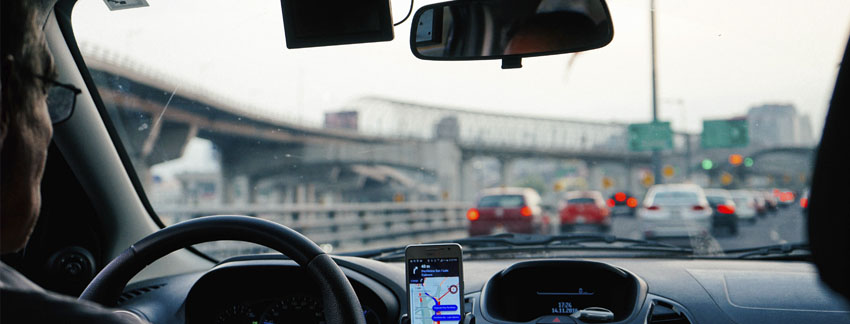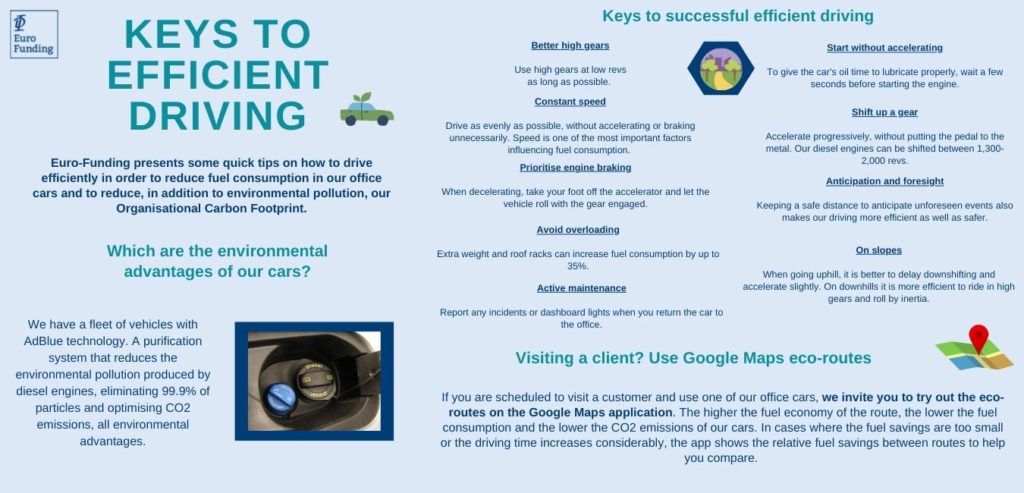
More Financing for Startups and Scaleups in Europe
More Financing for Startups and Scaleups in Europe Óscar SalazarSettings The European Commission has presented the EU Startup and Scaleup Strategy, aimed at positioning Europe


Did you know that speed is one of the factors that most influences fuel consumption? And that the use of heating and air conditioning increases consumption by up to 25%? And that Google Maps allows you to use eco-friendly routes? As one of the objectives set for the year 2022 in our ISO 5000 Energy Management System, we present some keys to drive efficiently and achieve a reduction in fuel consumption in our office cars and reduce, in addition to environmental pollution, our Organisational Carbon Footprint.
As one of the objectives set for the year 2022 in our ISO 50001 Energy Management System, Euro-Funding presents some quick tips to drive efficiently and reduce fuel consumption in the cars in our offices and reduce, in addition to environmental pollution, our Organisational Carbon Footprint.
The keys to success for more efficient driving:
Euro-Funding has a fleet of vehicles with AdBlue technology. A purification system that reduces the environmental pollution produced by diesel engines, as it reduces nitrogen oxides by up to 90%, improves fuel consumption, eliminates 99.9% of particles and optimises CO2 emissions. All environmental benefits.
If you regularly visit a client and use a company car, we invite you to try eco-routes in the Google Maps app. A new function that shows more efficient routes with fuel consumption estimates according to the type of vehicle engine. The more fuel-efficient the route, the lower the fuel consumption and the lower the CO2 emissions.
What factors are taken into account to calculate the most efficient route?
The application proposes the most fuel-efficient route if it has approximately the same arrival time as the fastest route. In cases where fuel savings are too small or driving time increases significantly, Maps displays the relative fuel savings between routes to help you compare.
¿Qué factores se tienen en cuenta para calcular la ruta más eficiente?
La aplicación propone la ruta con mayor ahorro de combustible si ésta tiene, aproximadamente, la misma hora de llegada que la ruta más rápida. En los casos en los que el ahorro de combustible es demasiado pequeño o el tiempo de conducción aumenta considerablemente, Maps muestra el ahorro de combustible relativo entre las rutas para ayudarte a comparar.

At Euro-Funding we accompany our clients in the process of implementing energy efficiency measures and the development of actions that reduce environmental impact through the development of specialised consultancy services, adapted to legal needs and obligations.

More Financing for Startups and Scaleups in Europe Óscar SalazarSettings The European Commission has presented the EU Startup and Scaleup Strategy, aimed at positioning Europe

Do data centres truly improve sustainability? Fernando GómezSettings The rise of Industry 4.0 and the increasing use of new technologies have created a significant dependence

Tracking Europe’s Green Transition: Insights from LIFE programme trends (2021–2024) Marie LatourSettings Since the start of the 2021-2027 programming period, the LIFE Programme has financed
